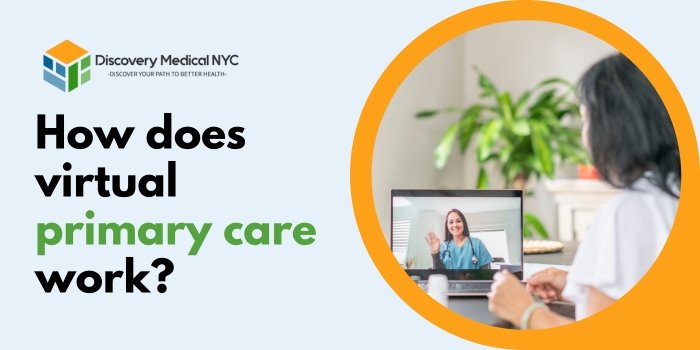Virtual primary care is a healthcare service that allows patients to consult with a licensed primary care provider remotely using secure technology — such as video conferencing, phone calls, or online messaging. It offers the same essential care you’d receive in person, but with greater convenience and accessibility.
Here’s how virtual primary care typically works:
-
Book an appointment online:
Most clinics offer easy online scheduling through their website or patient portal. Some also allow same-day or next-day appointments. -
Connect through a secure platform:
At your scheduled time, you’ll connect with your provider using a HIPAA-compliant video platform or receive a call, depending on the service. -
Discuss your symptoms and medical history:
Just like an in-person visit, your provider will ask about your symptoms, medications, and overall health. You can also discuss lab results, chronic conditions, or new concerns. -
Receive a diagnosis and treatment plan:
Based on your discussion, your provider may:-
Offer a diagnosis
-
Prescribe medications
-
Recommend lab tests or imaging
-
Refer you to a specialist if needed
-
- Follow-up and care coordination:
After the visit, you’ll receive a care summary, prescriptions (if applicable), and ongoing communication through your patient portal or app.
What conditions can be treated with virtual primary care?
Virtual primary care is suitable for a wide range of non-emergency health needs, including:
- Common illnesses: colds, flu, sinus infections, allergies
- Chronic conditions: diabetes, hypertension, asthma
- Preventive care: routine check-ins, wellness screenings
- Mental health support: anxiety, depression, sleep issues
- Prescription refills and medication management
For emergencies like chest pain, severe injury, or difficulty breathing, in-person urgent or emergency care is required.
Benefits of Virtual Primary Care
- Convenient: No travel or waiting rooms
- Efficient: Faster access to care, especially for follow-ups
- Accessible: Ideal for people in rural areas or with mobility challenges
- Private and secure: All visits are protected under strict privacy laws
Why virtual primary care matters
With the rise of telehealth, virtual primary care is transforming how people access essential health services. It provides continuity of care, improves patient engagement, and reduces barriers — making quality healthcare more accessible than ever.
Summary:
Virtual primary care lets you meet with a licensed provider through video, phone, or secure messaging — without going to a clinic. You schedule an appointment online, connect at your chosen time, discuss your symptoms, and receive a diagnosis, treatment plan, or prescription. It’s ideal for common illnesses, chronic condition management, mental health check-ins, and routine care.

